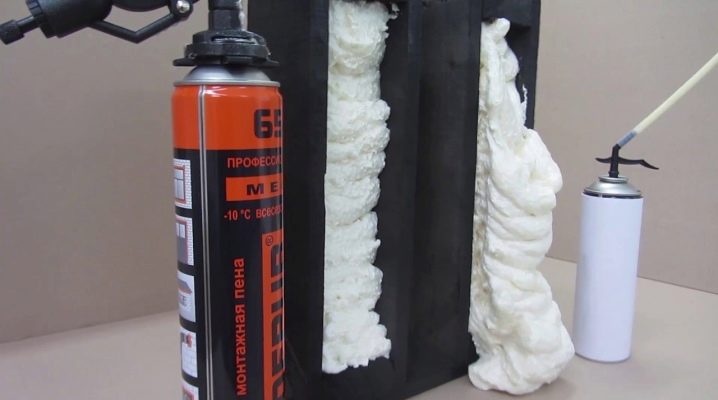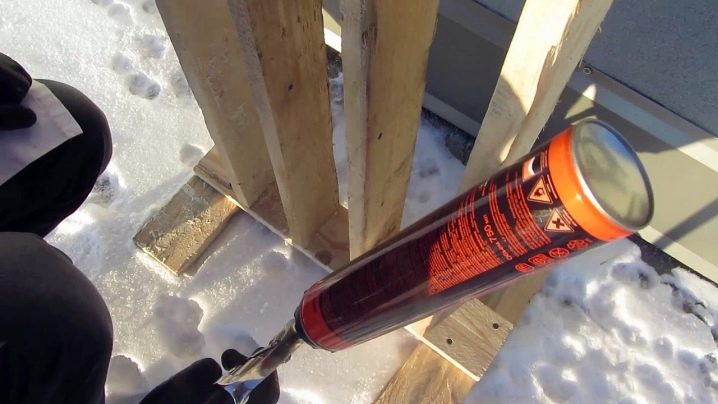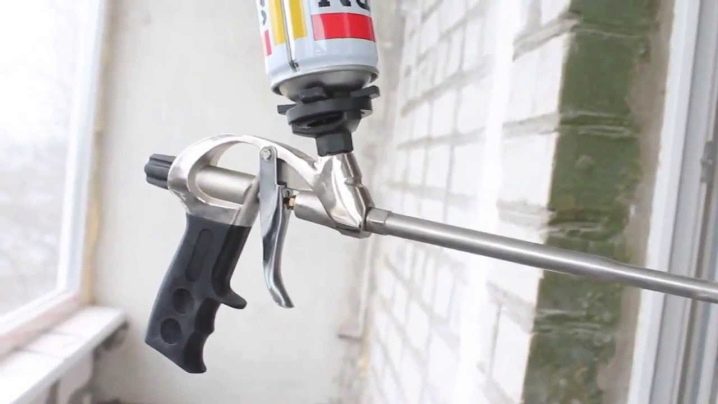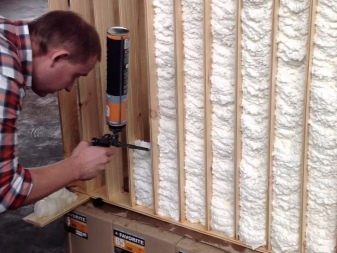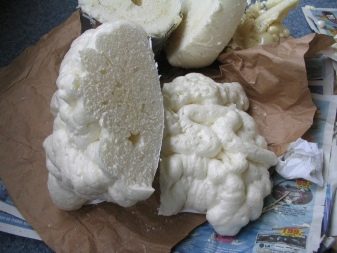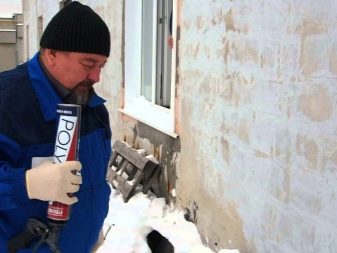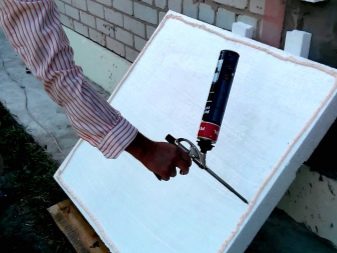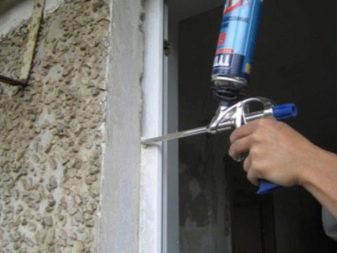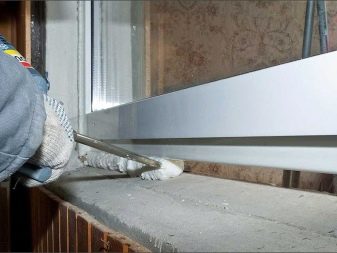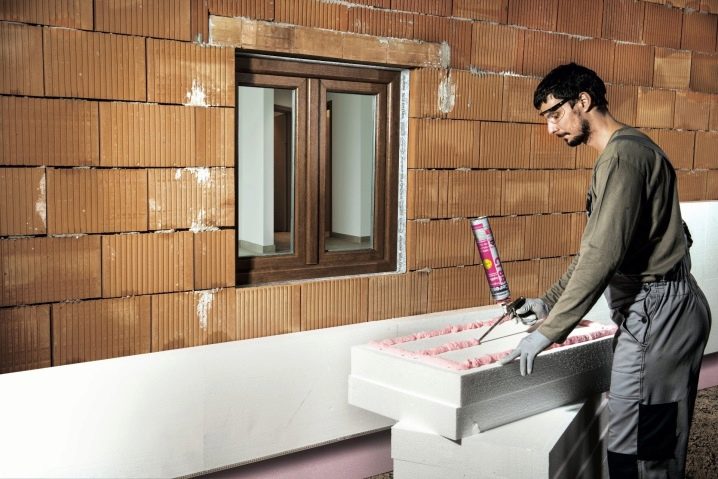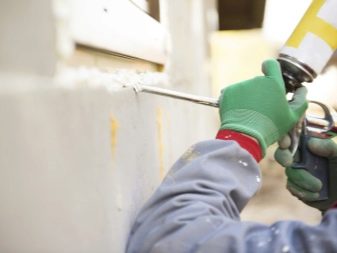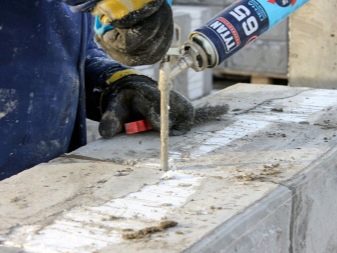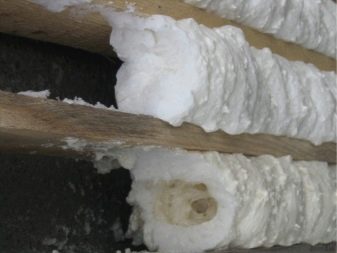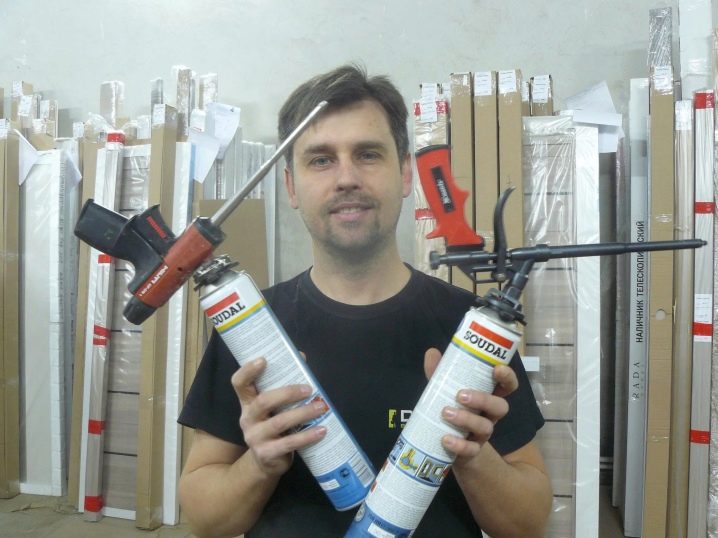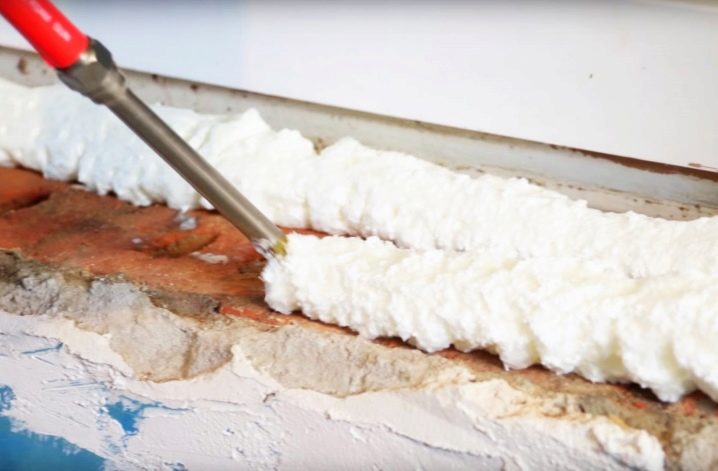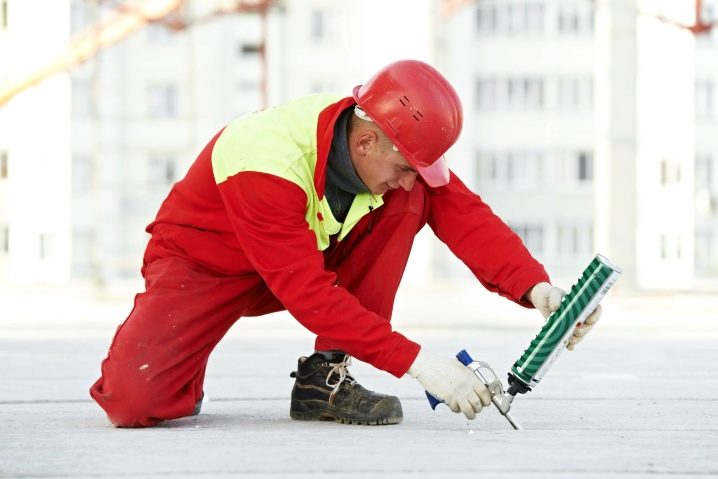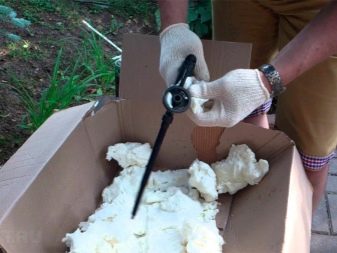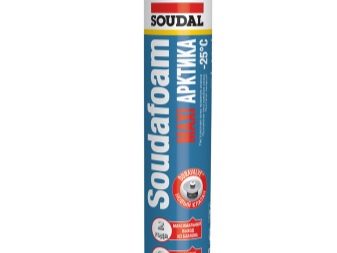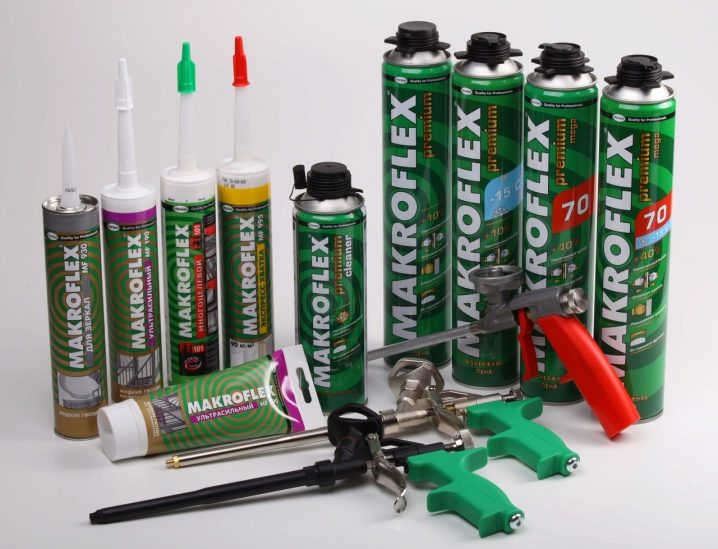Polyurethane foam at sub-zero temperatures: rules for use and operation
Without foam, it is impossible to imagine the process of repair or construction. This material is made of polyurethane, connects the separate parts with each other and warms various structures. After application, it is able to expand to fill all the defects of the wall.
Special features
Polyurethane foam is sold in propellant and prepolymer cylinders. Humidity of air allows the composition to harden with the effect of polymerization (the formation of polyurethane foam). The quality and speed of acquiring the necessary hardness depends on the moisture level.
Since the humidity level is lower during the cold season, the mounting foam hardens longer. To use this material at sub-zero temperatures, special components are added to the composition.
For this reason, there are several types of mounting foams.
- Summer high-temperature foam is applied at temperatures from +5 to + 35ºС. It withstands temperature stresses from -50 to + 90ºС.
- Off-season species are used at a temperature not lower than -10ºС. Even in case of negative weather, a sufficient amount is obtained. The composition can be applied without preheating.
- Winter low-temperature types of sealants are used in winter at air temperatures from -18 to + 35ºС.
Specifications
The quality of the foam is determined by several characteristics.
- Foam volume. This indicator is influenced by temperature conditions and humidity of the environment. At lower temperatures, the volume of sealant is less. For example, a cylinder with a volume of 0.3 l forms 30 liters of foam when sprayed at +20 degrees, about 25 liters at 0 temperature, and 15 liters at a negative temperature.
- Adhesion rate determines the bond strength of the surface and material. There are no differences between winter and summer views. Many manufacturing plants are trying to produce compounds with good adhesion to wood, concrete and brick surfaces. However, when using foam over ice, polyethylene, Teflon, oil bases and silicone, the adhesion will be much worse.
- Expanding capacity - This is an increase in the volume of sealant. The higher this ability, the better the sealant. The best option is 80%.
- Shrinkage - is the change in volume during operation. In the case when the seating capacity is too high, the structures are deformed or the integrity of their seams is disturbed.
- Exposure - is the duration of the complete polymerization of the material. With increasing temperature, the duration of exposure is reduced. For example, winter assembly foam at a temperature of from 0 to -5ºС freezes up to 5 hours, up to -10ºС - up to 7 hours, from -10ºС - up to 10 hours.
- Viscosity - it is the ability of the foam to stay on the ground. Professional and semi-professional mounting foams are produced for widespread use. Semi-professional options are ready for use after the valve is installed on the foam canister, professional ones are applied with a mounting gun equipped with a dispenser.
The advantages of the installation include the following:
- multifunctionality;
- heat, sound insulation properties;
- tightness;
- dielectric;
- resistance to temperature extremes;
- long service life;
- easy application
The disadvantages of the sealant are the following features:
- instability to ultraviolet radiation and high humidity;
- short shelf life;
- some species are capable of rapid ignition;
- difficult to remove from the skin.
Polyurethane foam is a versatile product that performs several functions.
- Tightness. It fills the gap, warming the interior, removes voids around doors, windows and other details.
- Gluing. It fixes the door blocks so that there is no need for screws and nails.
- Fixing the base for insulation and insulation, for example, for covering the building with foam plastic, the best option would be the installation composition.
- Soundproofing. The building material is struggling with increased noise during the operation of ventilation and heating systems. They close up the gaps between the pipelines, areas of connection of air conditioners and exhaust structures.
Terms of use
Experts recommend to adhere to several rules when working with mounting foam.
- Since removing the foam from the skin is not easy, you must first arm yourself with work gloves.
- In order to mix the composition, you should shake it thoroughly for 30–60 seconds. Otherwise, the resinous composition will flow from the cylinder.
- For the speed of adhesion, the workpiece is moistened. Then you can proceed directly to the application of foam. The cylinder must be kept bottom up to displace the foam from the cylinder. If this is not done, the gas will be extruded outside without foam.
- Zapenivanie carried out in the cracks, in which the width is not more than 5 cm, and if more, then use polystyrene. It saves foam and prevents expansion, which often leads to the destruction of the structure.
- Zenenyvayut bottom-up uniform movements, filling the third of the gap, because the foam hardens with expansion and fills it. When working at low temperatures, it is possible to work only with foam heated in warm water up to + 40ºС.
- For quick setting it is necessary to spray the surface with water. It is forbidden to spray at a negative temperature, so it is impossible to obtain the desired effect.
- In case of accidental hit of the mounting foam on the doors, windows, floors, it is necessary to eliminate it with the help of a solvent and a cloth, and then wash the surface.Otherwise, the composition will harden and remove it without damage to the surface will be very difficult.
- After 30 minutes after using the installation composition, it is possible to cut off the excess and plaster the surface. For this it is very convenient to use a hacksaw or a knife for building needs. Fully setting of the foam begins after 8 hours.
Professionals recommend that you carefully read the precautions before working with foam.
- Sealant can irritate the skin, eyes and respiratory tract. Therefore, it is recommended that a worker use safety glasses, gloves and a respirator in case of poor ventilation. After curing, the foam does not harm human health.
- In order to avoid the acquisition of fakes, you should use some recommendations: ask the store certificate for products; examine the quality of the label. Since the fakes are trying to produce with minimal cost, printing does not attach much importance. Defects of the label are visible on such cylinders with the naked eye: displacement of paints, inscriptions, other storage conditions; date of manufacture. Overdue material loses all its basic qualities.
Manufacturers
The construction market is rich in a variety of sealants, but this does not mean that they all meet the quality requirements. Often, stores come in foams that are not certified and do not meet the necessary requirements. Some manufacturers do not fully pour the composition into a balloon, or instead of gas they use volatile components that harm the atmosphere.
The most popular manufacturer of winter types of sealants is considered Soudal ("Arctic").
Products have the following characteristics:
- temperatures of use - above -25ºС;
- foam output at -25ºС - 30 liters;
- holding time at -25 ºС - 12 hours;
- Foam heating temperature - not more than 50ºС.
Another equally well-known manufacturer of building materials is the company. Macroflex.
Products have the following properties:
- temperature of use - above -10ºС;
- polyurethane base;
- stability in size;
- exposure time - 10 hours;
- foam output at -10ºС - 25 liters;
- sound insulation properties.
For the rules on the use of foam in sub-zero temperatures, see the following video.
